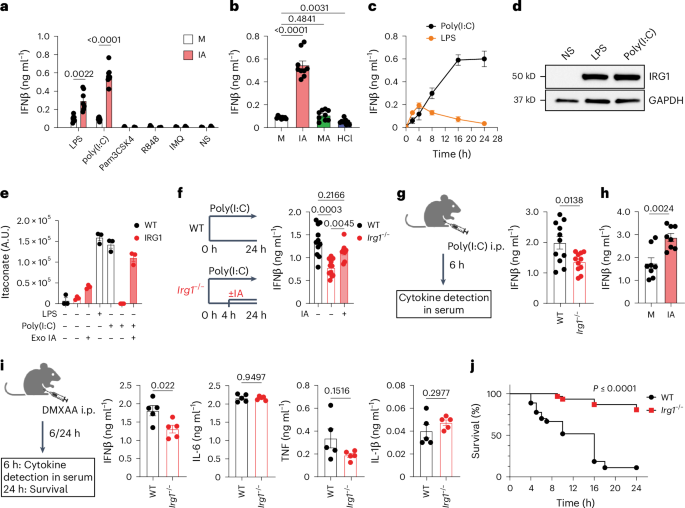DecodeMe Candidate Gene
CHROMOSOME 13
Chr13 contained no Tier 1 genes and one Tier 2 gene.
********************
OLFM4 (Tier 2)
• Protein: Olfactomedin-4. UniProt. GeneCards.
• Molecular function: OLFM4 facilitates cell adhesion, most probably through interaction with cell surface lectins and cadherin. It reduces neutrophil-dependent antibacterial and inflammatory responses by binding to neutrophil cationic proteins and neutralising their ability to kill bacteria and form immunogenic complexes with DNA (53).
• Cellular function: OLFM4 is a neutrophil-specific granule protein that is a biomarker for the severity of infectious diseases (54). It is expressed in gut epithelial cells and is stored in secondary granules of neutrophils.
• Link to disease: When cells are stimulated, OLFM4 is associated with neutrophil extracellular traps (NETs). NETs can be induced by reactive oxygen species produced by mitochondria (55). A cell death process called NETosis occurs after NET release, a form of antimicrobial innate immunity.
• Potential relevance to ME/CFS: OLFM4-positive neutrophils regulate microbial-induced damage of intestinal epithelial cells (56).
********************
References
53 Vandenberghe-Dürr S, Gilliet M, Di Domizio J. OLFM4 regulates the antimicrobial and DNA binding activity of neutrophil cationic proteins. Cell Rep. 2024 Oct 22;43(10):114863.
54 Liu W, Rodgers GP. Olfactomedin 4 Is a Biomarker for the Severity of Infectious Diseases. Open Forum Infect Dis. 2022 Apr;9(4) fac061.
fac061.
55 Papayannopoulos V. Neutrophil extracellular traps in immunity and disease. Nat Rev Immunol. 2018 Feb;18(2):134–47.
56 Huber A, Jose S, Kassam A, Weghorn KN, Powers-Fletcher M, Sharma D, et al. Olfactomedin-4 + neutrophils exacerbate intestinal epithelial damage and worsen host survival after Clostridioides difficile infection. bioRxiv. 2023 Aug 22
In DecodeME, we attempted to link GWAS variants to target genes. Here we discuss the top two tiers of predicted linked genes that we are most confident about –‘Tier 1’ and ’Tier 2’.
We defined genes as Tier 1 genes if: (i) they are protein-coding genes, (ii) they have GTEx-v10 expression quantitative trait loci (eQTLs) lying within one of the FUMA-defined ME/CFS-associated intervals, and (iii) their expression and ME/CFS risk are predicted to share a single causal variant with a posterior probability for colocalisation (H4) of at least 75%. For this definition, we disregarded the histone genes in the chr6p22.2 HIST1 cluster, as their sequences and functions are highly redundant (1). This prioritisation step yielded 29 Tier 1 genes.
For the intervals without Tier 1 genes, three Tier 2 genes were defined as the closest protein-coding genes without eQTL association: FBXL4 (chr6q16.1), OLFM4 (chr13q14.3), and CCPG1 (chr15q21.3).
CHROMOSOME 13
Chr13 contained no Tier 1 genes and one Tier 2 gene.
********************
OLFM4 (Tier 2)
• Protein: Olfactomedin-4. UniProt. GeneCards.
• Molecular function: OLFM4 facilitates cell adhesion, most probably through interaction with cell surface lectins and cadherin. It reduces neutrophil-dependent antibacterial and inflammatory responses by binding to neutrophil cationic proteins and neutralising their ability to kill bacteria and form immunogenic complexes with DNA (53).
• Cellular function: OLFM4 is a neutrophil-specific granule protein that is a biomarker for the severity of infectious diseases (54). It is expressed in gut epithelial cells and is stored in secondary granules of neutrophils.
• Link to disease: When cells are stimulated, OLFM4 is associated with neutrophil extracellular traps (NETs). NETs can be induced by reactive oxygen species produced by mitochondria (55). A cell death process called NETosis occurs after NET release, a form of antimicrobial innate immunity.
• Potential relevance to ME/CFS: OLFM4-positive neutrophils regulate microbial-induced damage of intestinal epithelial cells (56).
********************
References
53 Vandenberghe-Dürr S, Gilliet M, Di Domizio J. OLFM4 regulates the antimicrobial and DNA binding activity of neutrophil cationic proteins. Cell Rep. 2024 Oct 22;43(10):114863.
54 Liu W, Rodgers GP. Olfactomedin 4 Is a Biomarker for the Severity of Infectious Diseases. Open Forum Infect Dis. 2022 Apr;9(4)
55 Papayannopoulos V. Neutrophil extracellular traps in immunity and disease. Nat Rev Immunol. 2018 Feb;18(2):134–47.
56 Huber A, Jose S, Kassam A, Weghorn KN, Powers-Fletcher M, Sharma D, et al. Olfactomedin-4 + neutrophils exacerbate intestinal epithelial damage and worsen host survival after Clostridioides difficile infection. bioRxiv. 2023 Aug 22

